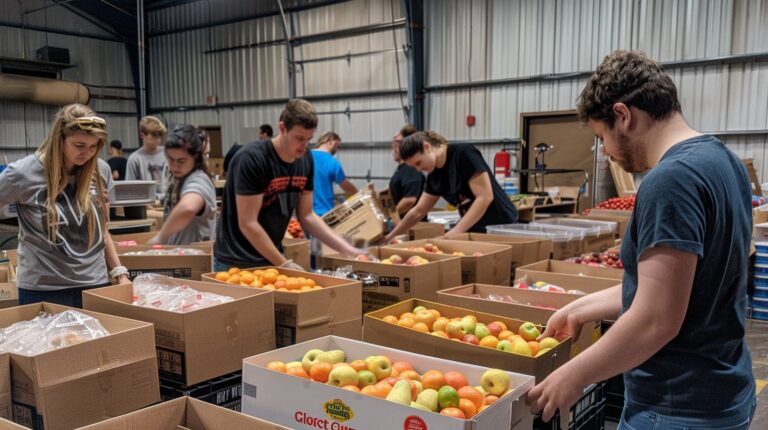Exploring the Global Challenges in Food Production and Security

Food production and security are critical issues that impact every corner of the globe. As the world’s population continues to grow, so does the demand for food. However, producing enough food to meet this demand while ensuring that it is accessible, safe, and sustainable is an enormous challenge. The complexity of global food systems means that these challenges are interconnected, often influenced by environmental, economic, and social factors. This article explores some of the most pressing global challenges in food production and security and the potential solutions that could help address them.
1. Climate Change and Its Impact on Agriculture
Climate change is arguably the most significant challenge facing global food production. Rising temperatures, changing precipitation patterns, and an increase in the frequency and severity of extreme weather events, such as droughts and floods, are disrupting agricultural production worldwide.
- Impact on Crop Yields: Changes in climate conditions can reduce crop yields by affecting the growth and development of plants. For example, heat stress during critical growth periods can lead to lower productivity in staple crops like wheat, rice, and maize.
- Water Scarcity: Many regions are experiencing reduced water availability, which directly impacts irrigation and the ability to grow crops. Water scarcity is particularly severe in arid and semi-arid regions, where agriculture is already challenging.
- Pest and Disease Proliferation: Warmer temperatures and changing climates are leading to the spread of pests and diseases that threaten crops. This can result in significant losses and further reduce food availability.
To combat these challenges, there is a growing focus on developing climate-resilient crops, improving water-use efficiency, and adopting sustainable farming practices that can adapt to changing conditions.
2. Land Degradation and Soil Health
Soil is a critical resource for food production, but it is under threat from degradation caused by unsustainable agricultural practices, deforestation, and urbanization. Over-farming, excessive use of chemical fertilizers, and deforestation contribute to soil erosion, loss of fertility, and desertification.
- Loss of Arable Land: Land degradation reduces the amount of arable land available for food production, leading to lower crop yields and increased pressure on remaining fertile lands.
- Nutrient Depletion: Intensive farming practices can deplete essential nutrients in the soil, making it difficult to sustain high levels of agricultural productivity over time.
To address soil degradation, sustainable land management practices, such as crop rotation, conservation tillage, and organic farming, are essential. Additionally, reforestation and afforestation efforts can help restore degraded lands and improve soil health.
3. Food Waste and Loss
Food waste is a significant challenge in the global food system, with an estimated one-third of all food produced for human consumption being lost or wasted. This waste occurs at various stages of the food supply chain, from production and harvesting to processing, distribution, and consumption.
- Economic Impact: Food waste represents a substantial economic loss for farmers, businesses, and consumers. It also contributes to food insecurity, as resources that could be used to feed the hungry are wasted.
- Environmental Impact: Food waste has significant environmental consequences, including the waste of water, energy, and other resources used in food production. Additionally, food waste contributes to greenhouse gas emissions when it decomposes in landfills.
Reducing food waste requires a coordinated effort across the food supply chain. This includes improving storage and transportation infrastructure, enhancing food processing and preservation techniques, and raising awareness among consumers about the importance of reducing waste.
4. Economic Inequality and Access to Food
Economic inequality is a major barrier to food security, particularly in developing countries where many people lack the financial means to access sufficient and nutritious food. Even in regions where food is plentiful, poverty can prevent individuals from being able to afford it.
- Food Price Volatility: Global food prices can fluctuate due to factors such as climate change, trade policies, and market speculation. When food prices rise, it can disproportionately affect low-income populations, leading to increased food insecurity.
- Access to Markets: Small-scale farmers in developing countries often struggle to access markets where they can sell their produce at fair prices. This limits their income and ability to invest in improving their agricultural practices.
Addressing economic inequality requires policies that promote fair trade, support small-scale farmers, and improve access to financial services and markets. Social safety nets, such as food assistance programs, are also crucial in helping vulnerable populations access the food they need.
5. Population Growth and Urbanization
The global population is expected to reach nearly 10 billion by 2050, which will significantly increase the demand for food. Urbanization is also on the rise, with more people living in cities than ever before. These trends present both challenges and opportunities for food production and security.
- Increased Demand for Food: As the population grows, so does the demand for food. This puts pressure on agricultural systems to produce more, often leading to the expansion of agricultural land at the expense of natural ecosystems.
- Urban Agriculture: Urbanization can limit the availability of agricultural land, but it also presents opportunities for innovative food production methods, such as vertical farming, rooftop gardens, and hydroponics.
To meet the growing demand for food, it will be necessary to increase agricultural productivity through sustainable practices and technological innovations. Urban agriculture and localized food systems can also play a role in enhancing food security in densely populated areas.
Conclusion
The global challenges in food production and security are complex and multifaceted, requiring coordinated efforts at local, national, and international levels. Addressing these challenges will involve a combination of technological innovation, sustainable farming practices, and policies that promote economic equity and environmental stewardship. By confronting these issues head-on, we can work towards a future where everyone has access to safe, nutritious, and sustainably produced food.






Thanks for sharing. I read many of your blog posts, cool, your blog is very good.